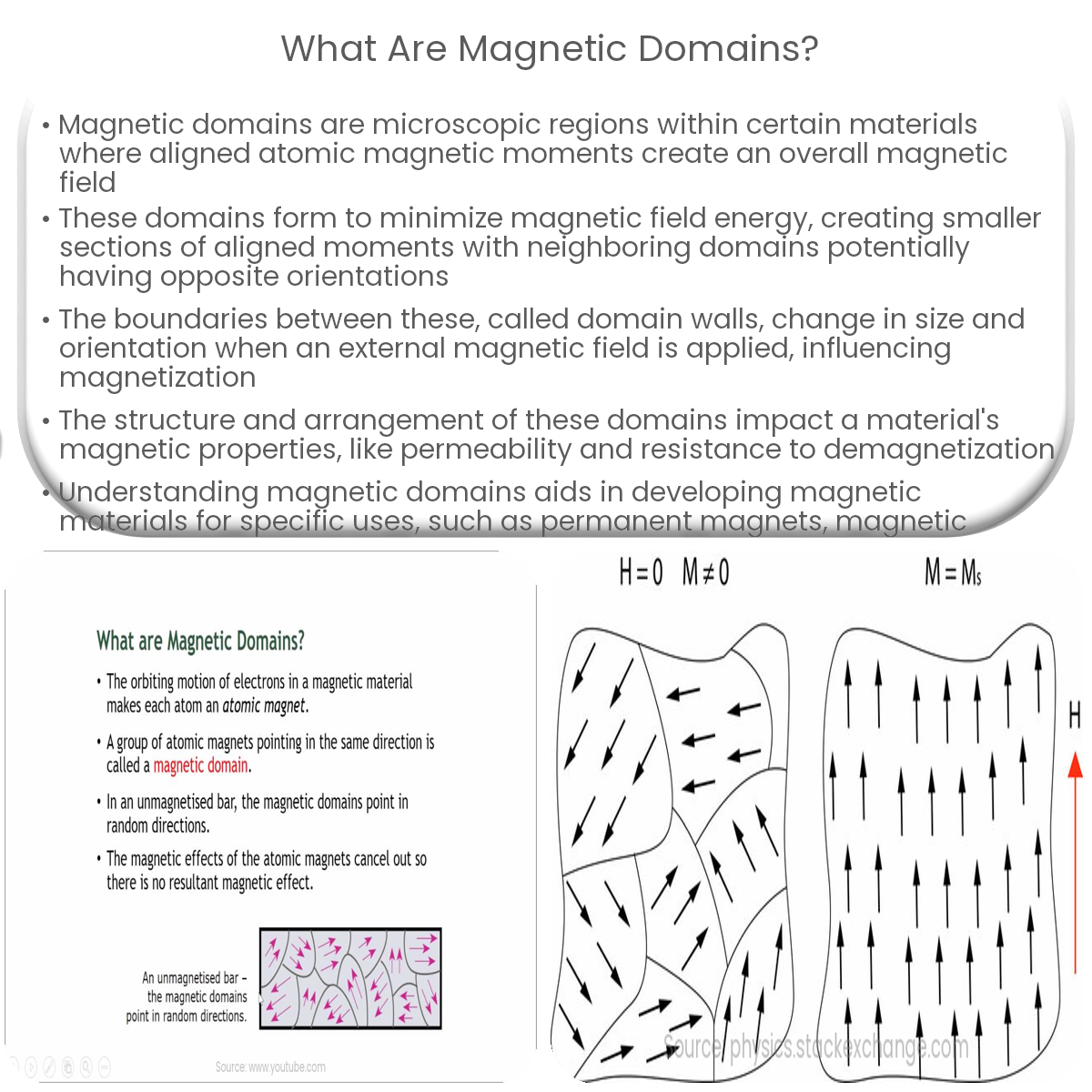Magnetic domains are microscopic regions in ferromagnetic materials where magnetic moments align, creating an overall magnetic field.
Magnetic Domains: An Overview
Magnetic domains are microscopic regions within ferromagnetic and ferrimagnetic materials where the magnetic moments of atoms align in a specific direction, resulting in an overall magnetic field. These domains are crucial in understanding the magnetic properties of these materials and their behavior in the presence of external magnetic fields.
Formation of Magnetic Domains
In the absence of an external magnetic field, magnetic moments in ferromagnetic materials tend to align in a parallel fashion due to a quantum mechanical effect called exchange interaction. However, perfect alignment across the entire material would result in an enormous magnetic field, which is not observed in nature. To minimize the magnetic field energy, materials form smaller regions called domains, where the magnetic moments are aligned, but neighboring domains may have opposite orientations.
Domain Walls and Movement
The boundaries between domains with different orientations are called domain walls. Domain walls are regions where the magnetic moments gradually change direction from one domain to another. When a magnetic field is applied to a ferromagnetic material, the size and orientation of the domains change. Domains aligned with the external field grow, while those opposing the field shrink. This process, known as domain wall movement, is responsible for the magnetization of ferromagnetic materials.
Domain Structures and Magnetic Properties
The structure and arrangement of magnetic domains greatly influence the magnetic properties of a material. For instance, materials with large, uniform domains are easier to magnetize and exhibit high magnetic permeability, while materials with small, irregular domains have higher coercivity, making them more resistant to demagnetization.
Applications of Magnetic Domains
Understanding magnetic domains and their behavior is essential for the development of magnetic materials with specific properties. Some applications of magnetic domains include:
- Permanent Magnets: Materials with high coercivity, such as rare-earth magnets, are used as permanent magnets in various applications, including electric motors and generators.
- Magnetic Recording: Magnetic domains are the basis for storing information on magnetic media like hard drives and magnetic tapes. Data is recorded as a pattern of magnetized domains on the storage medium.
- Electromagnetic Devices: The movement of domain walls is utilized in devices like magnetic sensors and transformers, which rely on the interaction between magnetic fields and electric currents.


